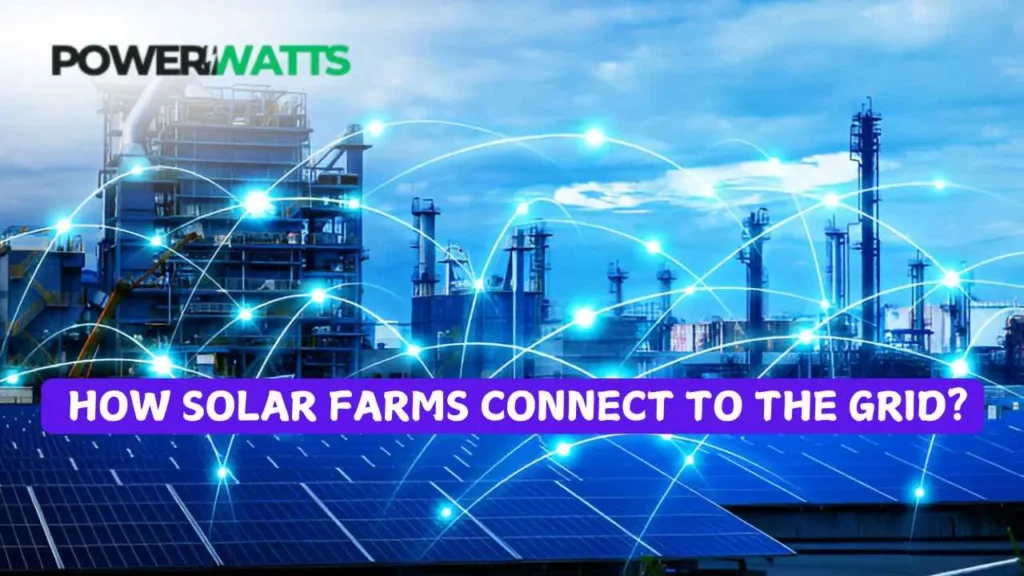Connecting solar panels to the power grid is a necessary step for getting clean energy to people who need it. Anyone interested in solar energy needs to know about solar connectivity. This includes land owners, developers, and people who just like green energy in general. This guide will explain how solar farms connect to the grid, what steps need to be taken, and why this process is important for making energy in general.
What is Solar Interconnection?
People use solar farms and other forms of solar energy to link to the local power grid. This process is called solar coupling. With this link, solar energy can be put into the grid, which lets homes and businesses use the power made by solar panels. The method of linking is very important for making sure that solar energy can be used safely and effectively.
Importance of Solar Interconnection
Solar farms need to be linked to the power grid for a number of reasons:
- Energy Distribution: Solar farms make power that needs to be sent to people who use it. This energy can flow into the grid through interconnection, so people can use it.
- Paid for Making Energy: Solar farms depend on getting paid by utility companies for the power they make. These projects would not be able to make money without connectedness.
- Stability of Grid: Proper connectivity helps keep the grid stable by making sure that solar energy can be added to the mix of energy sources without causing problems.
Solar Interconnection Process
The process of connecting a solar panel usually has a few main steps, though these can change depending on the power company and the rules in your area. The usual steps are broken down below:
1. Application for Interconnection
Getting a hookup application from the local power company is the first thing that needs to be done. Usually, this application has these parts:
- System Specifications: Information about the solar farm, like how big it is, where it’s located, and what kind of equipment it uses.
- Plans for electricity: A detailed technical plan that shows how the solar system will connect to the power grid.
- Insurance Proof: Proof that the solar project is covered by insurance.
- Applications: The energy company looks over the application to make sure it meets technical and safety standards.
2. Permission to Install
After getting the application accepted, the next step is to get permission to put it in the solar system. This could include:
- Checking the site: The utility company may visit the spot to make sure the work follows all local rules and safety standards.
- Grid Capacity Verification: The power company checks to see if the grid has enough space for the new solar energy that is being made.
3. Installation of the Solar System
The solar farm can be built once permission to do so is granted. Setting up solar panels, transformers, and other necessary gear is part of this.
4. Permission to Operate (PTO)
The solar farm needs to get permission to run once the installation is done.
- Final checks: To make sure everything is put properly and safely, the utility company does final checks.
- Interconnection Agreement: The power company and the owner of the solar farm sign an interconnection agreement that spells out the terms of the link.
The solar farm gets PTO once all the conditions are met, which lets it start making power and sending it to the grid.
Challenges in the Interconnection Process
The process of connecting is necessary, but it can be hard to understand and take a long time. Here are some common problems:
- Changes in regulations: Interconnection rules can be very different from one state or utility to the next, which can make things harder for people who want to build solar farms.
- Cost Effects: The prices of connecting can be different, which can cause surprises that cost more than planned and affect the project budget as a whole.
- Delays: The process of connecting can take weeks or even months, depending on how busy the company is and how complicated the job is.
Role of Utility Companies
A big part of connecting solar panels to the grid is done by utility companies. They are in charge of:
- Reviewing Applications: Making sure that all of them meet technical and safety standards.
- Conducting Inspections: Checking that rules are being followed by inspecting the place.
- Keeping the grid stable: It means making sure that adding solar energy doesn’t hurt the grid’s ability to stay online.
Future of Solar Interconnection
The solar connecting method is likely to change as the need for green energy grows. Changes in rules, new technologies, and more people knowing about solar energy will all have an effect on the future of solar connectivity.
- Streamlined Processes: Different companies are working to make the connecting process easier and more consistent. This could cut down on delays and costs.
- Increased Hosting Capacity: Utilities are looking into ways to make their grids more hosting capable so that more solar energy can be added without having to make a lot of changes.
Conclusion
Solar connectivity is an important part of the world of sustainable energy. Figuring out how solar farms link to the grid helps everyone involved get through the complicated process and makes it easier for solar energy to be used in the energy system as a whole. Solar connectivity that works well and efficiently will become even more important as we move toward a more sustainable future. Contact us to learn more about solar connections. You can count on our team to help you get through the process and get the most out of solar energy.


